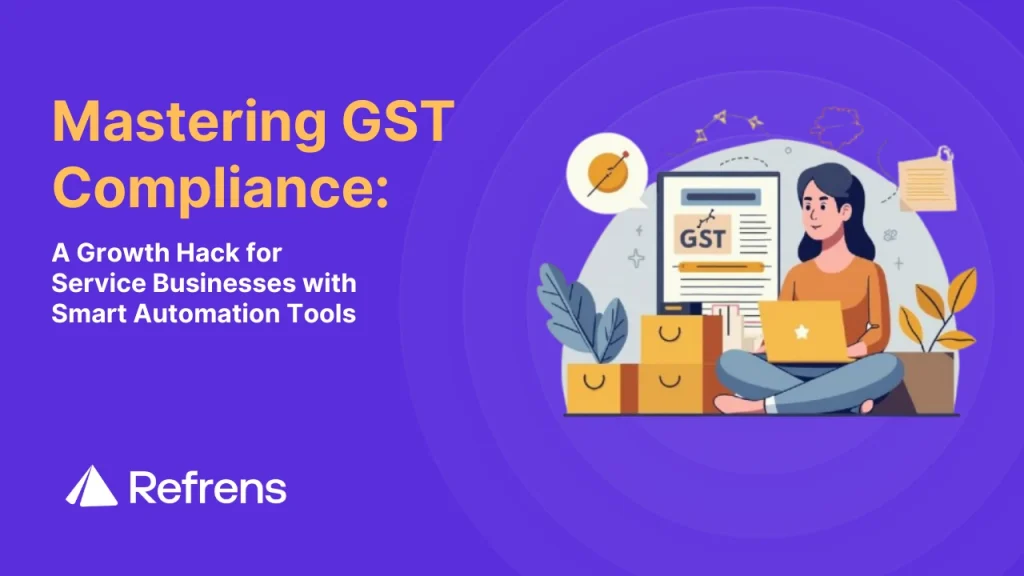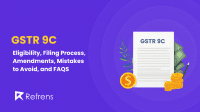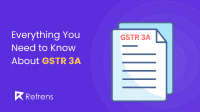Have you ever lost sleep over GST compliance?
Or maybe you’ve felt that constant worry as a deadline gets closer, knowing that a single slip could mean penalties or, worse, a dent in your business’s reputation.
Here’s the plot twist: GST compliance isn’t just a legal headache. For forward-thinking service businesses, it’s a secret growth hack. And with the rise of smart automation tools, getting GST right has never been easier or more profitable.
Let’s break down how mastering GST compliance with automation doesn’t just keep you penalty-free but actually fuels your business growth.
Why GST Compliance Matters (Way More Than You Think)
For service businesses, GST compliance is about more than ticking boxes for the government. It’s about protecting your cash flow, building client trust, and unlocking growth.
- Legal & Financial Risks: Missed deadlines or errors in GST returns can trigger hefty penalties and even block your input tax credit (ITC). That’s real money off your bottom line.
- Reputation Impact: Clients expect seamless, compliant billing. A compliance slip can mean lost business or referrals.
- Growth Opportunity: Streamlined GST compliance frees up your team’s time, reduces stress, and lets you focus on scaling up, not just surviving.
As GST regulations become more complex in 2025, businesses that automate compliance will outpace those stuck in manual mode.
The Pain Points of Manual GST Management
Still, relying on spreadsheets or basic accounting software to manage GST? You’re not alone, but you’re definitely at risk.
- Time Drain: Endless data entry, invoice matching, and return filing eat up valuable hours.
- Error Prone: Manual processes mean typos, missed credits, and costly corrections.
- Scalability Challenges: As your client base expands, so does the complexity. Manual compliance just can’t keep up.
Even minor mistakes in data entry or missed deadlines can lead to mismatches during reconciliation, missed ITC, and unnecessary stress. If your compliance officer is absent, the entire process may come to a standstill.
What Smart Automation Tools Actually Do for GST Compliance
Here’s where the magic happens. Smart GST automation tools aren’t just about filing returns; they’re about transforming your entire compliance workflow for speed, accuracy, and peace of mind.
- Auto-Generated Invoices: Create GST-compliant invoices in seconds, with automatic tax calculations and correct HSN/SAC codes.
- Real-Time Data Sync: Integrate your accounting, banking, and payment systems so data flows seamlessly into your GST software.
- Deadline Tracking: Automated reminders and dashboards mean you’ll never miss a filing date again.
- Audit Trails & Secure Storage: Every transaction is logged, making audits and internal reviews a breeze.
- Bulk Return Filing: For businesses with multiple GSTINs or locations, automation enables bulk uploads and filings, saving hours every month.
- ITC Reconciliation: Automatically match purchase invoices with GSTR-2A/2B data, so you claim every rupee of input tax credit you’re entitled to.
Automation isn’t about replacing your team; it’s about letting them focus on exceptions and analysis, not repetitive data entry.
Top Features to Look for in GST Automation Tools
Not all GST compliance software is created equal. Here’s what sets the top performers apart from the rest:
- Seamless Integration: The tool should connect easily with your existing accounting or CRM software (think Tally, Zoho Books, QuickBooks, or even custom ERPs), so you’re not stuck with double data entry.
- Mobile Access: Manage compliance on the go, whether you’re at a client site or working remotely.
- AI & OCR: Auto-capture and categorize expenses, receipts, and invoices using AI and Optical Character Recognition; no more manual typing.
- Custom Reports: Quickly create tailored dashboards and reports to gain real-time insights into GST liability, input tax credit status, and cash flow.
- Client Portal: Empower clients to upload documents, track filings, and stay in the loop, reducing back-and-forth and improving client satisfaction.
- Role-Based Access: Assign different access levels for team members so sensitive data stays secure.
Look for tools that keep up with the latest GST law changes and offer robust support and training resources.
Popular GST Automation Tools for Service Businesses
The Indian market is buzzing with smart GST compliance solutions. Here are some of the top picks for 2025:
Refrens: GST automation features to streamline billing, invoicing, and compliance for businesses, including auto-assistance for invoice details, one-click conversion of quotations to invoices and invoices to credit/debit notes, automated payment reminders, and auto-generated GSTR reports for easier return filing. For PDFs and scans, a structured PDF data capture can reduce the need for manual cleanup before filing.
Suvit: WhatsApp automation, Tally integration, automated GST reconciliation, and AI-powered data entry; perfect for CAs and agencies who want to automate client reminders and document collection. Discover more at Suvit.io.
Zoho Books: GST-ready invoicing, expense tracking, and compliance reporting, with seamless integration to Zoho’s suite of business tools.
Webtel Web-e-GST: Sophisticated reconciliation for GSTR 2A/2B, automates vendor payments, provides ITC notifications, and features ERP integration along with intuitive dashboards.
ClearTax GST: AI-powered invoice matching, bulk data import, and secure cloud access with robust analytics and compliance checks.
TaxPro GST: Bulk return filing, e-invoicing, and direct GSTN portal integration, ideal for firms managing multiple clients or GSTINs.
Each tool brings its strengths, so match their features to your business needs and workflow.
Step-by-Step Guide: How to Automate GST Compliance in Your Business
Prepared to take the next step? Follow this detailed guide to efficiently automate and master GST compliance:
- Audit Your Current Process: Identify where you’re losing time, manual data entry, reconciliation, chasing clients for documents, etc.
- Select the Best Tool: Assess features, compatibility with your systems, and pricing. Take advantage of free trials or demos.
- Set Up Integrations: Connect your GST software to your accounting, banking, and payment systems for seamless data flow.
- Train Your Team: Provide onboarding and ongoing support so everyone can use the new system confidently.
- Monitor & Optimize: Use dashboards to track time saved, error rates, and compliance success. Regularly review and tweak your workflows as your business grows.
Automation doesn’t have to be all-or-nothing. Start with one process (like e-invoicing or ITC reconciliation) and expand as you see results.
Pro Tips to Maximize Your GST Automation ROI
- Start Small: Automate one process at a time, like e-invoicing or ITC reconciliation, before rolling out full-scale automation.
- Stay Updated: GST rules change often. Choose a tool that pushes updates automatically and offers regular training.
- Leverage Support: Use vendor training, webinars, and user communities to get the most out of your software.
- Review Regularly: Audit your automated workflows every quarter to catch new bottlenecks or opportunities for improvement.
- Encourage Team Buy-In: Involve your team in the automation journey. Their feedback will help you tailor processes and boost adoption.
GST Compliance as a Growth Hack, Let Automation Do the Heavy Lifting
GST compliance doesn’t have to be a burden. With the right automation tools, service businesses can transform compliance from a cost centre into a growth driver. You’ll gain time, minimize mistakes, satisfy clients, and allow your team to concentrate on what’s important: providing excellent service and growing your business.



















